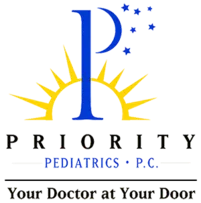Ways to Engage in Your Child’s School to Support Student Health and Learning
Information for Parents and Families
As a parent, you want your child to do well in school. You also want your child to be healthy and avoid behaviors that are risky or harmful. Through your guidance and support, you can have great influence on your child’s health and learning. One way you can show your support is by being involved in your child’s school. Research shows that when parents and school staff work together, students are healthier and more successful in school.
What is parent engagement in schools?
Parent engagement in schools is defined as parents and school staff working together to support and improve the learning, development, and health of children and adolescents. (For this discussion of parent engagement, “parent” refers to the adult primary caregiver(s) of a child’s basic needs [e.g., feeding, safety].
Adult primary caregivers include biological parents; other biological relatives such as grandparents, aunts, uncles, or siblings; and nonbiological parents such as adoptive, foster, or stepparents.)
Why is it important for you to engage in your child’s school?
Studies have shown that students who have parents engaged in their school lives are more likely to have
• Higher grades and test scores.
• Better student behavior.
• Enhanced social skills.
In addition, students who have parents engaged in their school lives are less likely to
• Smoke cigarettes.
• Drink alcohol.
• Become pregnant.
• Be physically inactive.
Action 1: Advocate for your school to support parent engagement.
• Ask the school if there is a vision and mission statement or an action plan for parent engagement.
• Talk with teachers and staff to suggest simple changes that can make the school a more pleasant and welcoming place for parents.
Action 2: Take advantage of the support schools provide to parents.
• Ask whether your child’s school or school district provides—or could offer—programs or classes to help you become more involved in your child’s academic and school life. • Suggest topics for classes the school or school district might offer, such as the following:
➤ Understanding child and adolescent development.
➤ Praising and rewarding desirable health behaviors.
➤ Talking with children about health-related risks and behaviors.
Action 3: Communicate consistently with the school and read the information it provides to you.
• Read school newsletters, attend parent-teacher-student conferences, and check out the school’s Web site to learn what is going on at the school, and encourage your child to participate.
• Meet regularly with your child’s teachers to discuss his or her grades, behavior, and accomplishments.
• Offer to share important aspects of your culture with your child’s class.
• If your first language is not English, ask for materials that are translated into the language you speak at home, and ask for interpreters to help you at school events.
Action 4 Take time to volunteer at your child’s school.
• As your schedule allows, help in your child’s classroom, attend after-school events, or participate in a school committee, such as a health team or parent organization.
• Ask the school if you can help with lunch-time walks, weekend games, or after-school exercise programs in dance, cheerleading, karate, aerobics, yoga, or other activities.
Action 5 Support learning about health in your home.
• Involve your child in cooking meals, shopping for healthy foods, and reading labels on over-the-counter medicines.
• Ask your child to share with you health and safety behaviors learned in school.
What can you do to be more engaged in your child’s school health activities?
Here are some actions that you can take, at home and at school, to be more involved in your child’s school health activities.
Action 6: Be involved in the health decisions at the school.
• Ask to be involved in parent organizations—such as the Parent Teacher Association (PTA) or Parent Teacher Organization (PTO), school health councils, or school action teams—to help improve the health and well-being of students.
• Get involved with your child’s school to help
➤ develop school health policies, emergency and safety plans, and health and safety messages;
➤ select health-related curricula or foods and beverages for school breakfasts and lunches;
➤ establish health services, referral procedures, or other plans and programs that support students’ health.
Action 7: Know what community services are supported by the school.
• Learn whether dental services, health screenings, childcare, or health promotion programs are offered at school.
• If health services or programs are not supported by the school, ask your child’s school or the school district to offer them.
Resources Parent Engagement:
Strategies for Involving Parents in School Health www.cdc.gov/healthyyouth/adolescenthealth/pdf/ parent_engagement_strategies.pdf
National Coalition for Parent Involvement in Education www.ncpie.org/
National Network of Partnership Schools at Johns Hopkins University www.partnershipschools.org
National Parent Teacher Association www.pta.org
Parental Information and Resource Centers www.nationalpirc.org
For more information contact:
Centers for Disease Control and Prevention
1600 Clifton Road NE, Atlanta, GA 30333
Telephone: 1-800-CDC-INFO (232-4636)
TTY: 1-888-232-6348
E-mail: [email protected] www.cdc.gov/healthyyouth
Parents need to be committed to and involved in actions that can improve students’ health and education outcomes.
